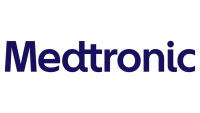Death from sudden cardiac arrest and opioid overdose are both major public health problems in the United States. Out-of-hospital cardiac arrest, where there is a sudden loss cardiac function caused by a dysrhythmia, affects approximately 356,000 people in the United States each year and has a national survival rate of 10 percent [1]. Bystander CPR, public access to defibrillators and high-quality CPR quality greatly improve a patient’s chance of survival from sudden cardiac arrest.
Opioid overdose caused more deaths in 2012 than motor vehicle collisions in the United States among people 25 to 65 years old [1]. Approximately 28,000 people died from opioid overdose in 2014, and deaths from heroin overdose tripled between 2010 and 2014 [2]. In response to the growing opioid epidemic, the antidote naloxone is increasingly available at the BLS and emergency medical responder level and at some public locations along with AEDs.
EMS providers and first responders must make several critical decisions when called for a patient who is unconscious with ineffective breathing. Here are five things to identify and manage patients in sudden cardiac arrest or in respiratory compromise from an opioid overdose.
1. Cardiac arrest is primarily a circulatory problem and opioid overdose is primarily a respiratory problem
Sudden cardiac arrest in adults is caused by the abrupt loss of heart function, usually from ventricular fibrillation, and is brought on by a myocardial infarction or other preexisting dysrhythmia. CPR can restore circulation to vital organs during cardiac arrest, and defibrillation can terminate ventricular fibrillation, allowing normal heart electrical function to resume. The chance of survival decreases with each minute delay of chest compressions and defibrillation.
Opioid overdose causes a loss of respiratory drive and death from opioid overdose is secondary to hypoxia. There is usually a gradual decrease of respiratory rate after ingestion, followed by respiratory arrest, brain damage and then cardiac arrest. Patients with respiratory compromise after opioid overdose need assisted ventilation and oxygenation.
When given early enough and at a sufficient dose, naloxone can then restore respiratory drive after an opioid overdose. For patients in cardiac arrest after opioid overdose, the AHA recommendation of 30 compressions to two ventilations aims to balance the need for circulation and oxygenation, followed by naloxone to restore respiratory drive.
2. Check for a pulse on any unconscious patient and start CPR unless you are sure that you feel one
Timely, high-quality CPR is essential for survival from any cause of cardiac arrest. Detecting a pulse can be difficult even for experienced providers; start CPR if a pulse cannot be palpated within 10 seconds.
Patients in sudden cardiac arrest may still have gasping respirations or seizure activity for the first few minutes after collapse and unconscious opioid overdose patients may have a pulse that is too weak or too slow to detect. Always err toward starting compressions – the benefit CPR for a patient in arrest outweighs any potential harm of rib fractures if done on an unconscious patient with a pulse [1].
Push hard when performing compressions – at least 2 inches – and come all the way off of the chest on the upstroke. Deliver 100 to 120 compressions a minute and give two rescue breaths after each cycle of 30 compressions (though local protocols may vary slightly). Deliver each breath with a bag-valve mask over one second and deliver only enough oxygen needed to make the chest rise [1].
If the patient regains consciousness or begins breathing spontaneously, reassess for a pulse and proceed with airway management [1].
3. Apply a defibrillator while performing CPR
Ventricular fibrillation is a common rhythm after sudden cardiac arrest and overdose on some opioids can cause lethal dysrhythmias as well [1]. Attach a defibrillator as early as possible after starting compressions and only interrupt compressions to analyze the rhythm. An AED will only deliver a shock if it detects ventricular fibrillation or ventricular tachycardia. The AED will prompt rescuers when to do compressions, when to pause compressions for rhythm analysis and when to stand clear of the patient and deliver a shock.
Any interruption in chest compressions is harmful and rescuer fatigue compromises the rate and depth of compressions. Rotate compressors at least every two minutes. Change during rhythm analysis or ventilation to minimize interruption and maintain compression quality.
4. Assist ventilation for patients who have a pulse with ineffective breathing
Opioid overdose is a common cause of respiratory compromise, but there are other causes, including seizures, anaphylaxis, obstructive lung disease or overdose on other toxins. Establishing a patent airway and assisting ventilation is the first priority for any patient with ineffective breathing. Open the airway with a head-tilt, chin-lift or jaw thrust, suction secretions if present and ventilate the patient with a bag-valve mask connected to oxygen. Ensure that the mask is sealed to the patient’s face, squeeze the bag over one second, deliver just enough air to make the chest rise and ventilate every five to six seconds. Reassess for a pulse and breathing every two minutes and begin CPR if a pulse is lost [1].
5. Administer naloxone for suspected opioid overdose after addressing respiratory and circulatory compromise
Once CPR or assisted ventilation has been established on an unconscious patient, assess the scene to determine if an opioid was ingested, inhaled or injected. Look for syringes, small plastic bags, pills or a report of previous opioid use from bystanders. Constricted pupils also suggest opioid ingestion.
Naloxone is an adjunct to CPR, defibrillation and assisted ventilation to treat a suspected opioid overdose [3]. Naloxone works by blocking opioid receptors from being stimulated by the substance the patient administered, which can restore the patient’s respiratory drive and airway reflexes.
Naloxone kits available to first responders and lay rescuers deliver naloxone via intranasal or intramuscular route, and advanced level providers may administer naloxone intravenously. Administer the dose of naloxone based on local protocols or manufacturer recommendations, and repeat the dose if there is no response after four minutes [3].
There is a small risk of patients addicted to opioids going into withdrawal after receiving naloxone, which can cause agitation, vomiting and respiratory distress [3]. The risk of opioid withdrawal is greatest when naloxone is administered too quickly intravenously. Patient should only receive naloxone if they have respiratory compromise after opioid use and patients should only receive enough naloxone needed restore respiratory drive and airway reflexes – not to wake up completely. There is no harm from administering naloxone to a patient who did not ingest, inhale or inject an opioid [3].
Continue to perform CPR or assist ventilation after administering naloxone and do not delay transport if a patient does not respond to naloxone. The patient may not respond due to brain damage after a prolonged down time, administration of an opioid that is more potent than the available dose of naloxone, or use of other toxic substances along with the opioid.
Care for any unconscious patient starts with assessing for a pulse and adequate breathing, and addressing those issues with CPR, defibrillation and assisted ventilation. Use a standardized approach to ensure that a cardiac arrest is not missed and that naloxone is administered for suspected opioid overdose after addressing compromises to circulation and ventilation.
References
1. Kleinman ME, Brennen EE, Goldberger ZD, Swor RA, Terry M, Bobrow BJ, Gazmuri RJ, Travers AH, Rea T. Part 5: adult basic life support and cardiopulmonary resuscitation quality: 2015 American Heart Association Guidelines Update for Cardiopulmonary Resuscitation and Cardiovascular Care. Circulation. 2015 (suppl 2):S414-S435.
2. United States Department of Health and Human Services. Opioids: the prescription drug and heroin epidemic. Retrieved from: https://www.hhs.gov/opioids/
3. Lavonas EJ, Drennan IR, Gabrielli A, Heffner AC, Hoyte CO, Orkin AM, Sawyer KN, Donnino MW. Part 10: special circumstances of resuscitation: 2015 American Heart Association Guidelines Update for Cardiopulmonary Resuscitation and Cardiovascular Care. Circulation. 2015;132(suppl 2):S501–S518.
This article was originally posted Apr. 28, 2017. It has been updated.














